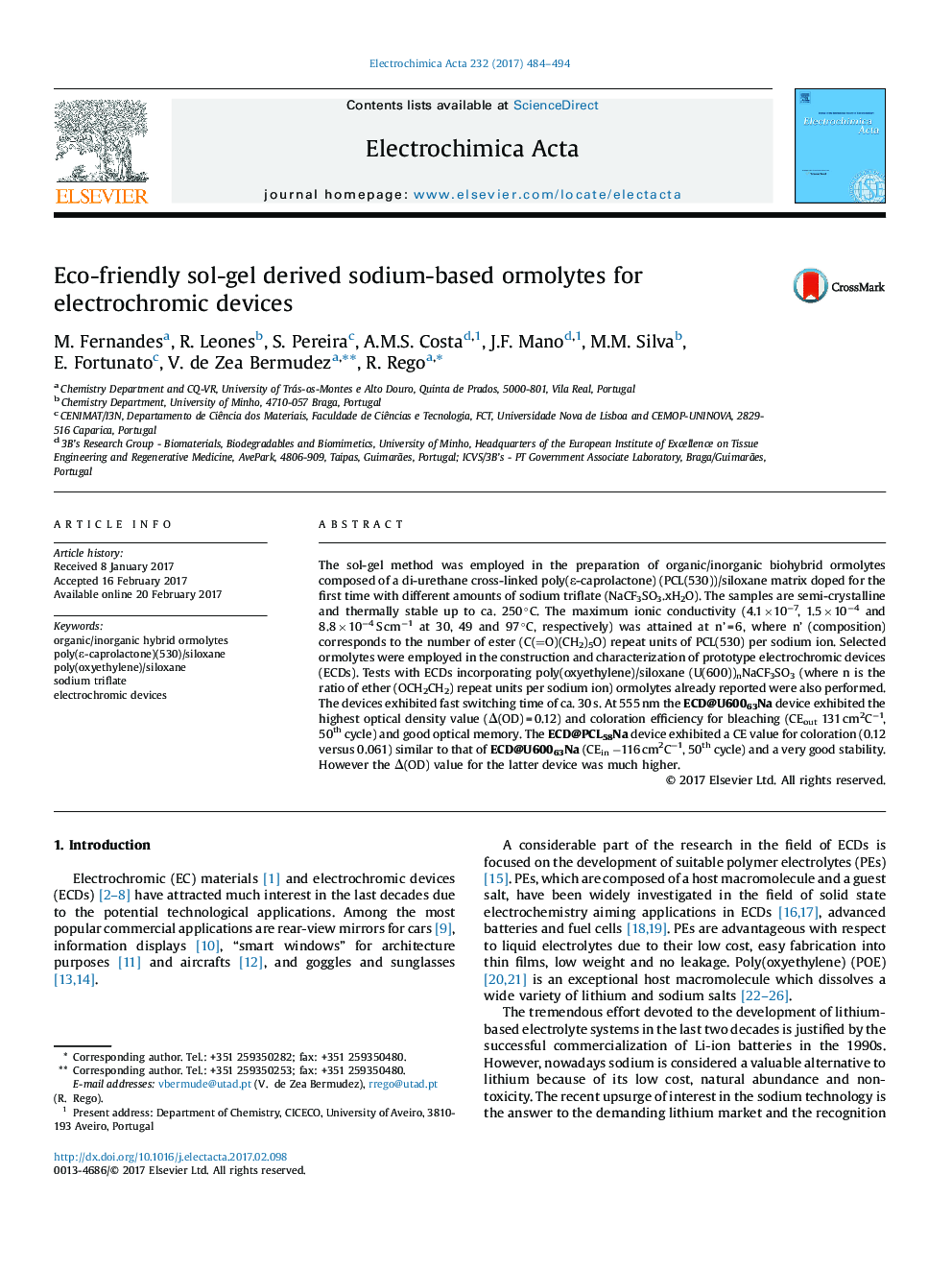| Article ID | Journal | Published Year | Pages | File Type |
|---|---|---|---|---|
| 6471904 | Electrochimica Acta | 2017 | 11 Pages |
â¢Two series of ormolytes doped with NaCF3SO3 were prepared by the sol-gel route.â¢The samples are thermally stable up to ca. 250 °C.â¢Best room temperature conductivity was attained with a poly(ε-caprolactone)/siloxane network.â¢An ECD with a POE/siloxane-based ormolyte produced a coloration efficiency of â116 cm2Câ1 at 555 nm.
The sol-gel method was employed in the preparation of organic/inorganic biohybrid ormolytes composed of a di-urethane cross-linked poly(ε-caprolactone) (PCL(530))/siloxane matrix doped for the first time with different amounts of sodium triflate (NaCF3SO3.xH2O). The samples are semi-crystalline and thermally stable up to ca. 250 °C. The maximum ionic conductivity (4.1 Ã 10â7, 1.5 Ã 10â4 and 8.8 Ã 10â4 S cmâ1 at 30, 49 and 97 °C, respectively) was attained at n' = 6, where n' (composition) corresponds to the number of ester (C(O)(CH2)5O) repeat units of PCL(530) per sodium ion. Selected ormolytes were employed in the construction and characterization of prototype electrochromic devices (ECDs). Tests with ECDs incorporating poly(oxyethylene)/siloxane (U(600))nNaCF3SO3 (where n is the ratio of ether (OCH2CH2) repeat units per sodium ion) ormolytes already reported were also performed. The devices exhibited fast switching time of ca. 30 s. At 555 nm the ECD@U60063Na device exhibited the highest optical density value (Î(OD) = 0.12) and coloration efficiency for bleaching (CEout 131 cm2Câ1, 50th cycle) and good optical memory. The ECD@PCL58Na device exhibited a CE value for coloration (0.12 versus 0.061) similar to that of ECD@U60063Na (CEin â116 cm2Câ1, 50th cycle) and a very good stability. However the Î(OD) value for the latter device was much higher.
Graphical abstractDownload high-res image (95KB)Download full-size image
